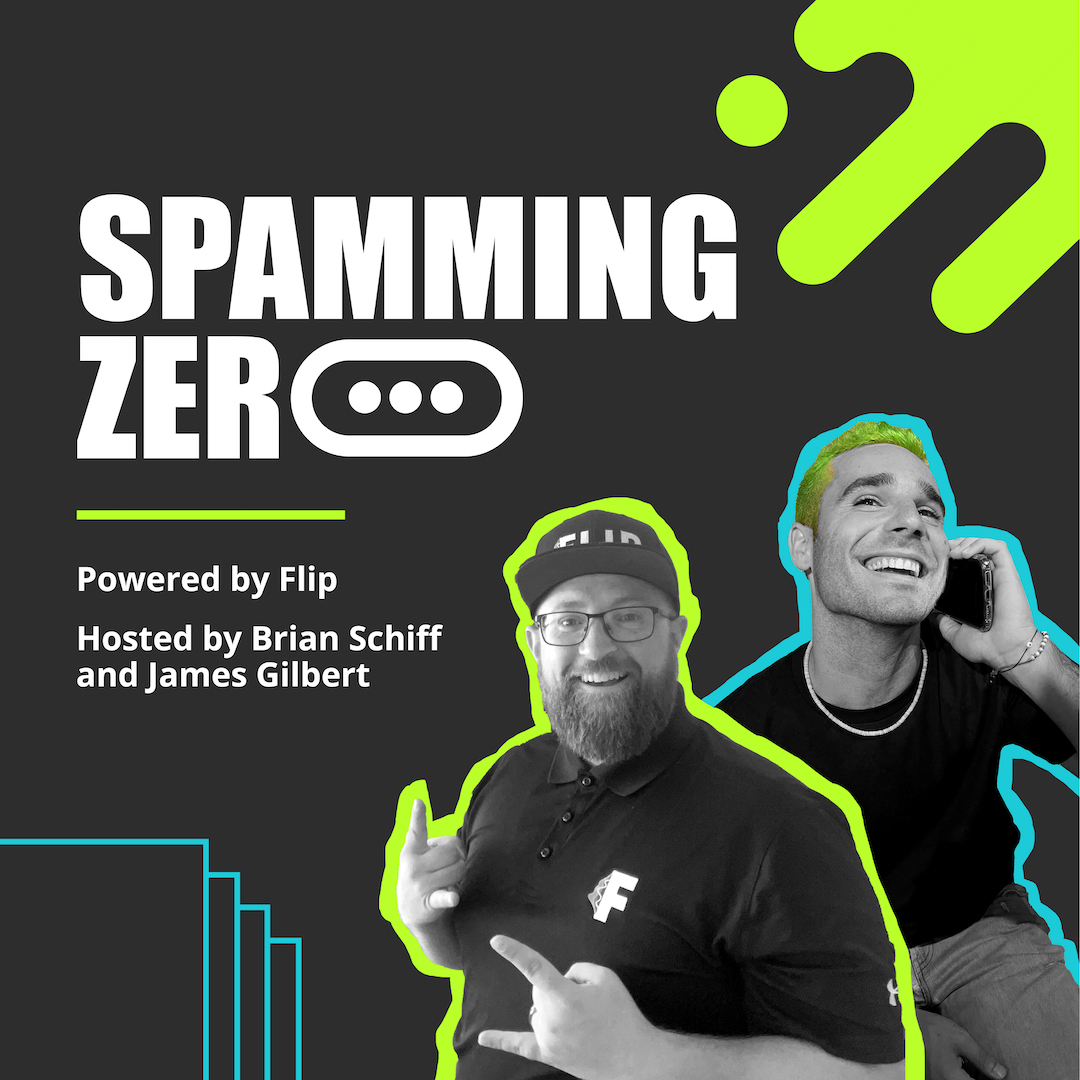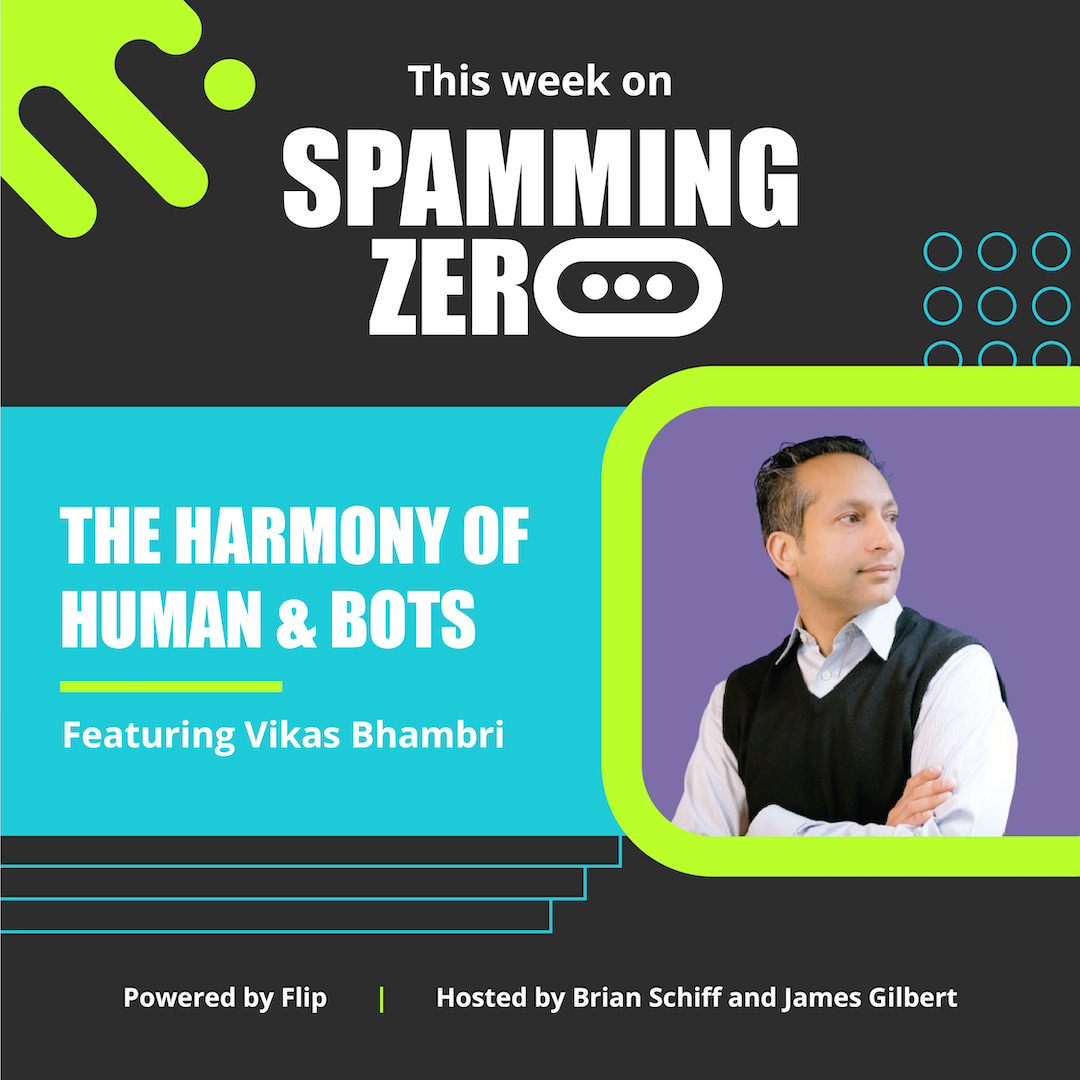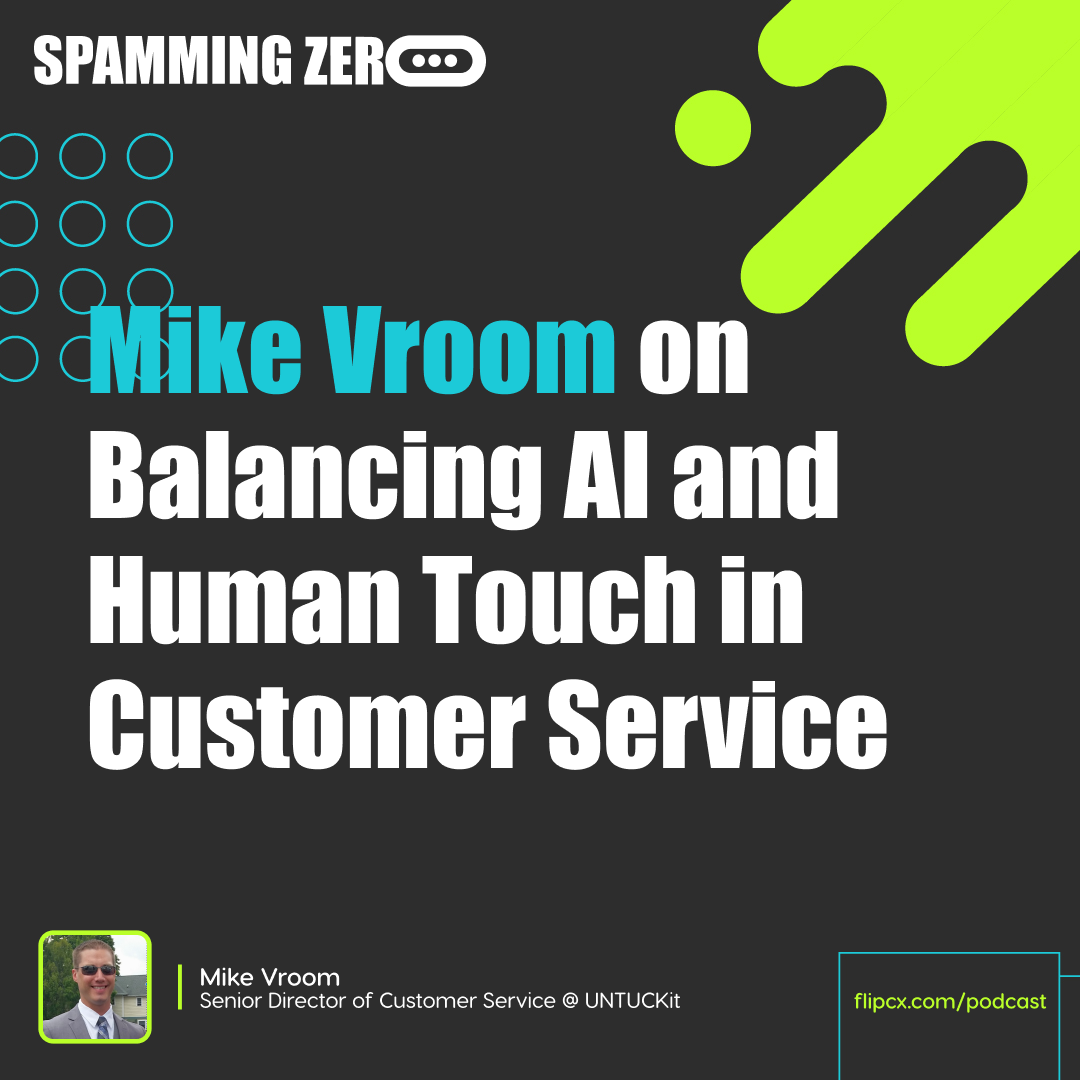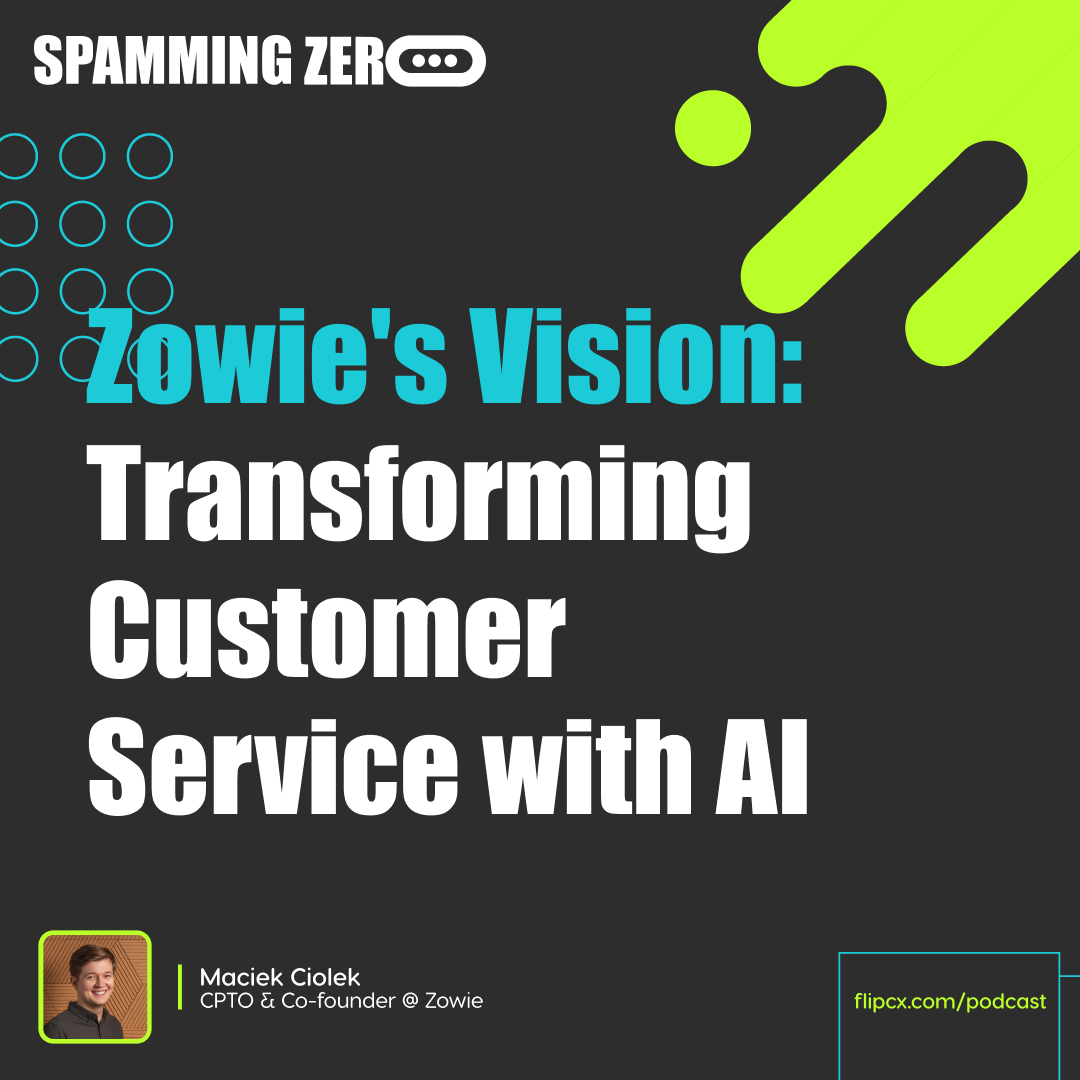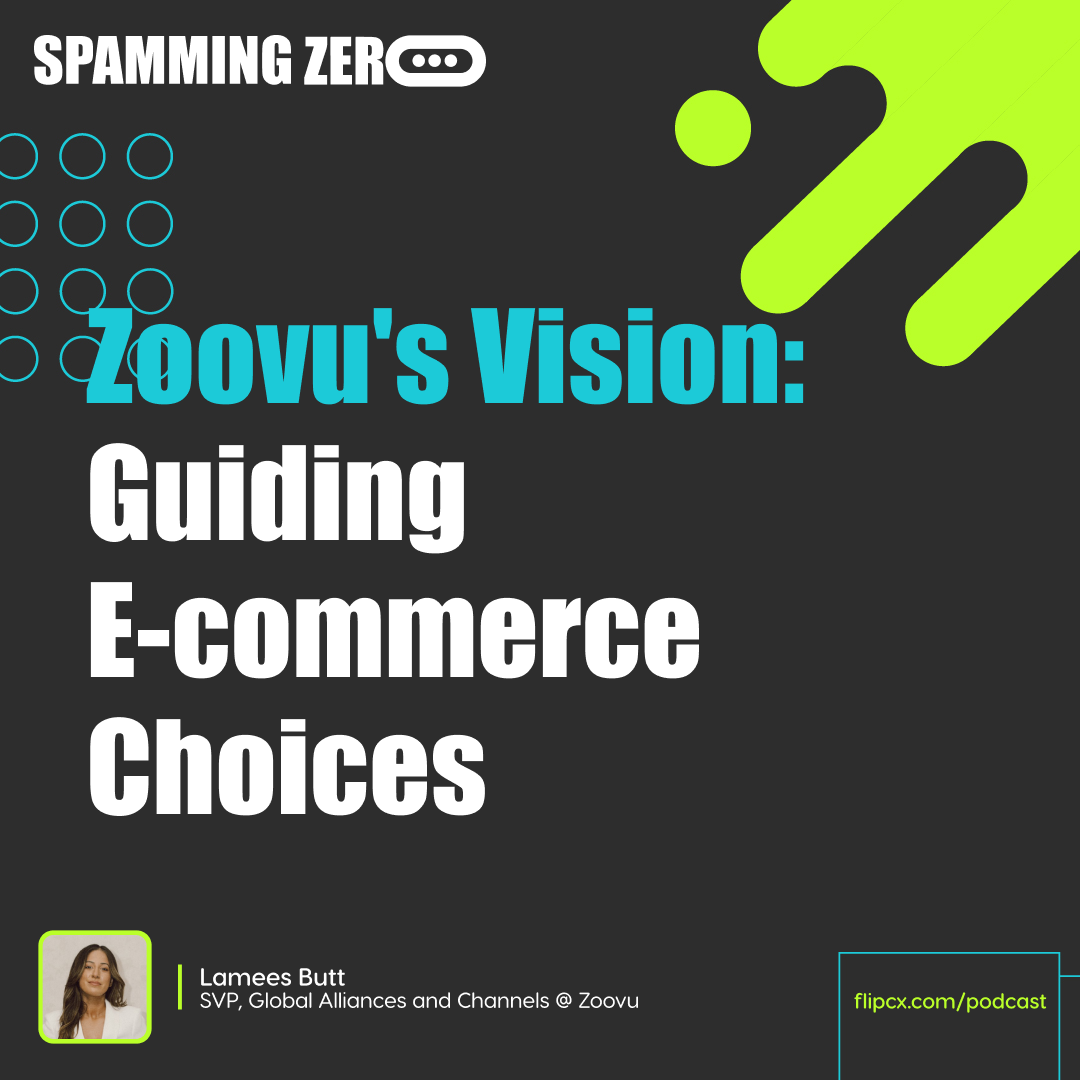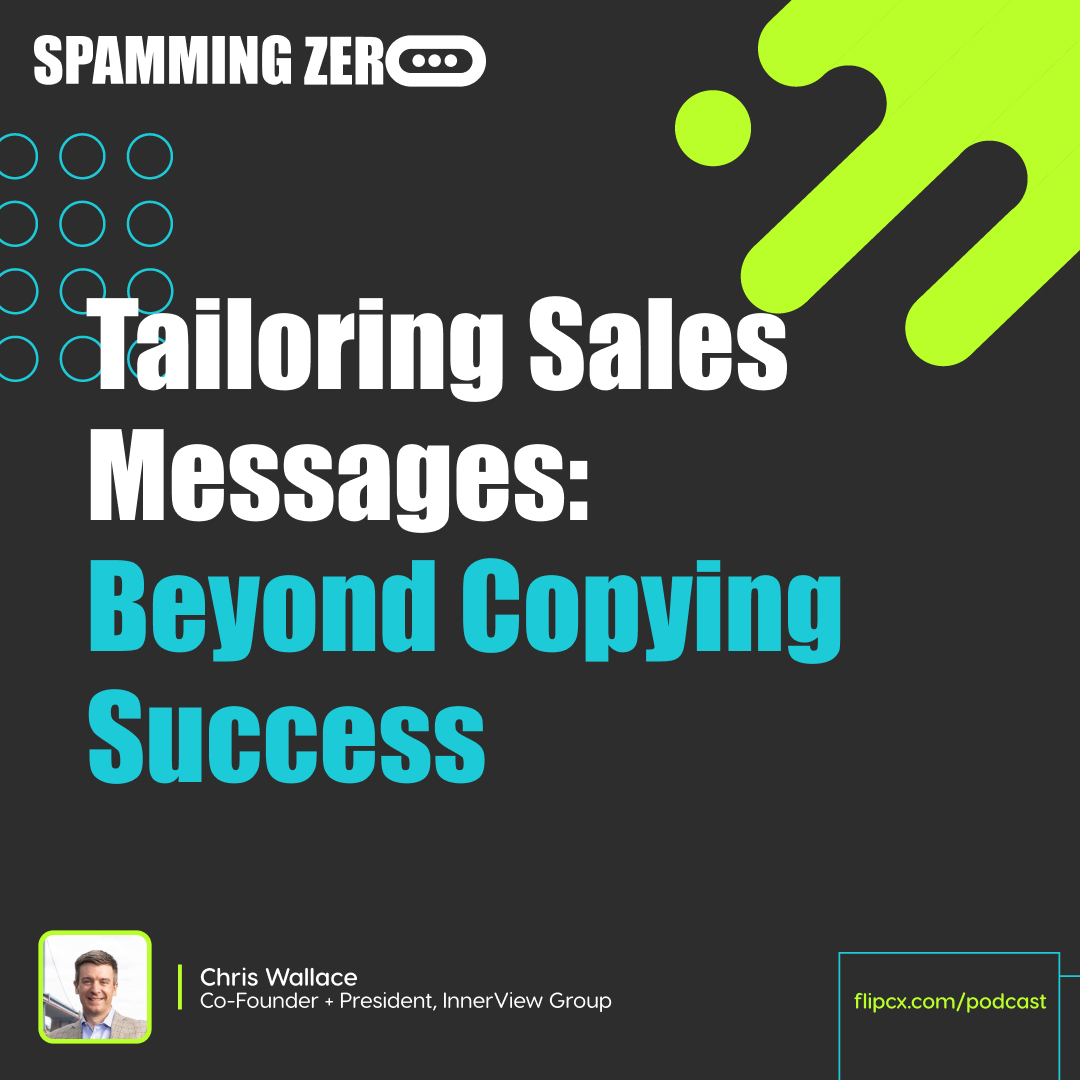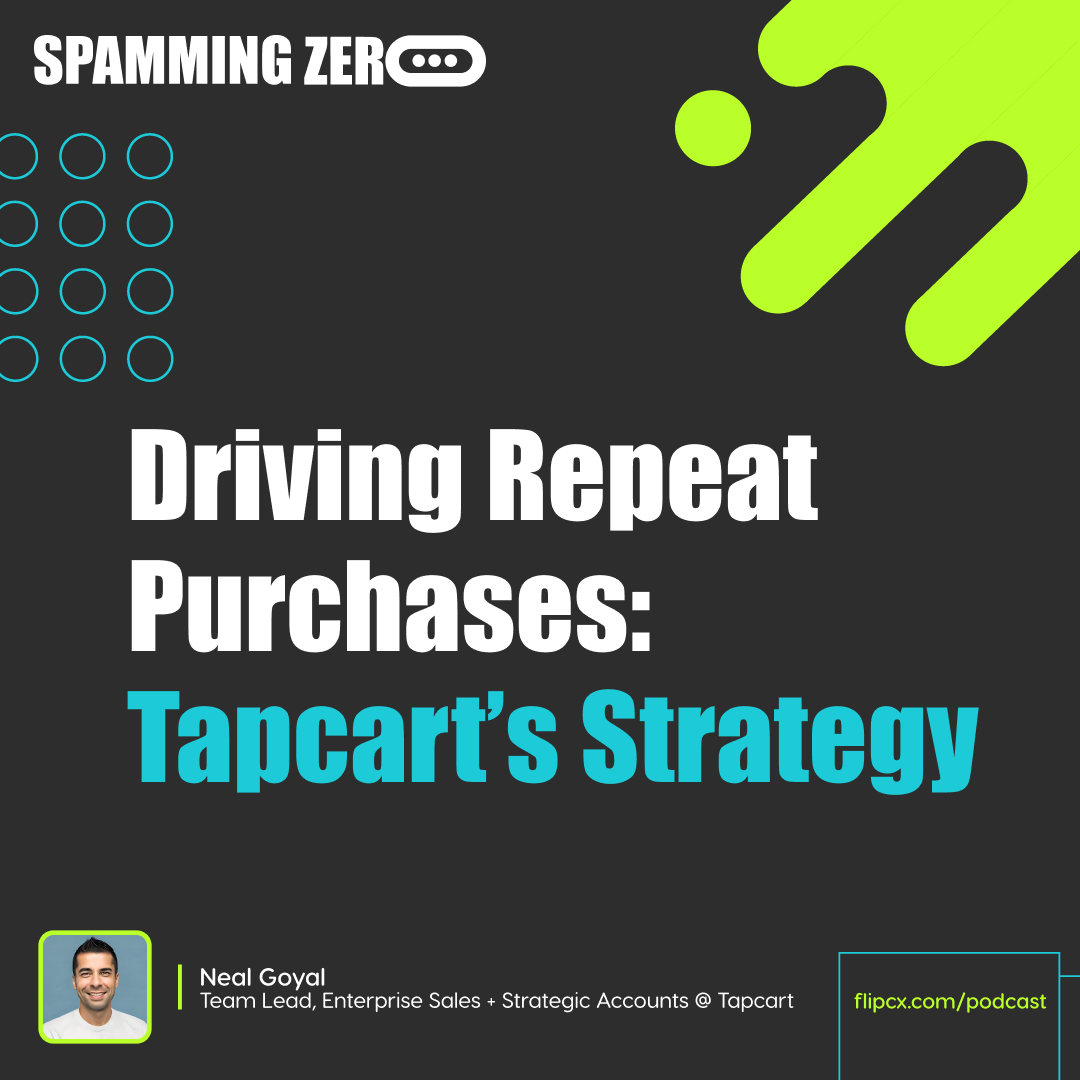Episode 19: Vikas Bhambri of Kustomer Talks Harmony of Humans and Bots
- 0.5
- 1
- 1.25
- 1.5
- 1.75
- 2
James: Here we go. Another episode on Spamming Zero. We are going to be joined by Vikas Bhambri today. Vikas is the Global Sales and Customer Experience Director at Meta. He's built and scaled numerous high performing teams over the past 25 years. He's passionate about customer experience, as we are here at RedRoute. Vikas joined Kustomer in 2017 as the senior vice president of sales and customer experience to build and lead the go- to market to compete with entrenched legacy vendors such as Salesforce, Zendesk, and Oracle. He built and led Kustomer's revenue functions across sales, professional service, customer success and support, until Kustomer's exit to Meta in 2022. Very, very recent. So we'll talk a little bit about that. He's worked with everybody from Bank of America and UPS to the more tech forward companies he currently helps. And I am especially excited about this topic because as many of you may know, I am a big CRM fan. I have been for a very long time and done a lot of consulting around that. And that is what we're going to be talking about today, CRM and the call center. And more importantly than all of that is creating harmony between AI and humans in today's world. We'd like to thank our current sponsor of the month Aircall. Aircall. io, go check them out. Love what they do. They also just reached a hundred million in revenue, which is incredible. We partner with them. They're a big part of our ecosystem. Aircall is a cloud- based call center and phone system of choice for modern businesses. A voice platform that integrates seamlessly with popular productivity and help desk tools. Aircall was built to make phone support, easy to manage and accessible, transparent and collaborative. Aircall believes that a great conversation is the most powerful way to communicate with customers, prospects, candidates and colleagues. We tend to agree. They are as equally invested with voice and sound as we are. I'm James.
Brian: And I'm Brian.
James: And this is Spamming Zero. Hey everybody, welcome to the show. Vikas Bhambri is joining us here. Welcome Vikas.
Vikas Bhambri: Thanks for having me. I've been in the CRM contact center space for over 20 years and it's been a fun ride seeing many different iterations of the industry in terms of the digital movement, for people moving from voice, to email, to Chat, adding the social channels along the way, and now the big adoption of business messaging in the industry. So it's been a fun ride. Most recently doing it here at Kustomer, with a K, which is now part of Meta. So it's been an exciting ride over the years. And I think why I love this space so much is, though there are consistencies from brand to brand as to just some basic operational mechanisms of how you run a contact center, ultimately, every brand has their nuance of how they want to do it, because it is such a differentiator beyond the products and services they offer. How they engage their customers. And of course different industries do it in different ways, whether it's retail, financial services, travel. So going back to my old consulting days, I feel like now I'm a consultant, but in kind of micro sites where I'm visiting multiple customers a day and trying to help them figure out what their course of action is as they deal with whatever the new normal is. Obviously we went through a pretty interesting normal over the last few years and now coming into the current environment, people are trying to figure out how to do more with less and so on, so.
James: Should we dive into this topic? I did a lot of consulting for CRM for a very long time. And I think one of the things that has always been a very interesting topic for me is how oftentimes I'm on the phone with a particular brand and they ask for information from me and then I get transferred and the same brand, same situation, same inquiry, same phone call, and they don't have the information. And this is an area where I think CRM is super important. And one of the things that I remember about 2014 when I was getting into the customer experience space. One of the first things that we asked people before they started a customer experience program and a strategy was," Do they have a CRM?" And one of the reasons why we did it is because data's king. It helps make everything better. So that's the topic for today. We're going to talk about this bridge of CRM and the contact center. We're going to talk about the harmony of humans and bots and I'd love for you to start us off. Why is CRM so important to people's strategies?
Vikas Bhambri: We've used this term CRM for almost 25 years now, and if you ask most people, you talk about CRM, they automatically think about their Salesforce automation tool. They think about the tool that they use to close business. That is the world that CRM originated in. But the concept of CRM in customer service or the contact center, particularly in B2C, didn't exist. What you saw over the course of years was people implemented a dialer that allowed them to take voice calls or they put in Chat or they had some email response system that they were using. And all those tools allowed them to interact with the customer, but then they had a whole different set of tools and in many cases it was a wide array that would allow that contact center agent or that customer service associate to figure out who that client was, why they were calling, et cetera. So that was one of the key things when we launched Kustomer in market five years ago, was to truly bring this concept of CRM into the B2C customer service space, where companies could truly identify who that client or customer was that was trying to engage them, by bringing in all the data from all the various systems, including that interaction data into one view. So now when you engage that brand, everybody that you speak to in that brand, has the context of who you are, what your relationship to that brand is and potentially why you're even calling. So they can almost infer by you reaching out to them that it's about that most recent interaction or purchase with that brand.
Brian: What were the early things that you guys were hearing as you were taking this new concept out to brands?
Vikas Bhambri: I remember one of our now longtime customers, which is a household brand that you'll see in every mall in America. The first time we presented to them, the head of customer experience said," Why would I want my agents to have all that information? I think you're only going to lengthen the time it takes for them to deal with that customer." And the mindset, because the mindset, if you think about the contact center is, what are the things we're measuring? First contact resolution. Average handle time. That's all well and good, but here's the benefit of giving your agent all that information. They know the order that that customer's placed. They know where that order is in your shipping process. They know what the items are. So now let's have a different point of view or a different thought of now you call me and I'm the agent at your brand and I'm saying," Hey Brian, thanks for calling. I really appreciate you reaching out to me. Are you calling about the shirt that you ordered last week?" Imagine what your immediate reaction is," Whoa." And now it's a totally different conversation, right? Because we can almost jump to the conclusion of, are you looking to exchange? Was their damage? Is it shipping issue? All of those types of things. So fortunately for us, they've been a long time customer, we were able to get them to see it a different way. But that was the initial reaction was," Wait, why do we want to give our team members all this information about the client?" Not because of any data privacy concerns, et cetera it was really about," Well we just want to rush through tickets." And that whole old school mentality of how the contact center operates.
James: What's interesting to me is the data that exists there and how it can actually be surfaced to an agent is you got to have the data. And that's the reason why you need the CRM is so that it can empower the next best action and all this other stuff. You have such an incredible opportunity as a brand when your customers are on hold with you and you're listening to music. And what's fascinating to me is I've never, not one time in the history of ever calling any brand, I have never ever heard a brand take advantage of that time with a customer. And imagine if during that hold time, you prompted the customer and said, just ask them two questions that were just like get to know you questions. And then you record that in your CRM and then it becomes part of the personalization of what that agent does. Talk about a better experience.
Vikas Bhambri: The only pushback I would have there, James, is hold time, there's so many opportunities for a business to not even allow us as consumers, to get into that. Whether it's automatic callback. Whether it is," Hey, let us start an async communication with you via SMS or WhatsApp or Chat." So yes, you could use that hold time more efficiently, but my question would be, why do we even need to be in a hold queue with hold music? I would love to see a world with that doesn't exist, because I think at this point it's, brands that are still doing it, I think are really punishing the customer unnecessarily.
James: But this happened during the pandemic. Agents were now working from home. Agents were going home. It was a new way to work and hold times actually went way up.
Vikas Bhambri: They got worse. They certainly got worse during the pandemic because some of the scenarios that you provided. But look, in this day and age with tools like Kustomer and other tools that are out there, some of our partner solutions like yourselves and others, there's just no need. Make that, and so many brands, kudos to them, made the investment. Pre pandemic of course, but even those that saw their hold queues and things kind of building up in the pandemic were like," Wait a minute, this is not going to fly because if we don't do something now our consumers are going to go elsewhere and they're never going to come back." And fundamentally changed the way they engage their consumers and took that opportunity to fix some short- term challenges that will obviously benefit them in the long- term as we kind of quote, unquote," return to normal."
Brian: You're hitting on what I view as the two biggest challenges that often hold back these organizations that are not delivering against those expectations. One, being the systems and really this idea of the systems layer on top of each other. So Kustomer, for example, is accessing data that exists in their order management system. When you go into these large enterprise environments, they don't have clean modern systems. They're on things that they either highly customized or even entirely purpose built themselves 5, 10, 20, 30 years ago. And to go all the way down to the bottom and go through that quote unquote," transformation process," is a really daunting thing. But you need to work your way from the bottom up to be able to stack these different tools on top of each other. For us, in a lot of ways as kind of that voice automation layer, we're sitting almost on top of the customer layer, which is in a lot of ways sitting on top of these other systems. So I think that it is a multi- step progression that needs to happen across their entire stack. And then the other piece that you talk about is the mindset and the metrics are the derivative or the sibling or the offspring of the mindset, where if at the executive level it's all about cost management, cost reduction. Then at the department level it becomes all about average handle time, first contact resolution versus a different sort of mindset, which I think is part of what you guys have been driving with this product that you guys have brought into the market. So I guess my question for you is, how have you seen the mindset change? And so how has that kind of unfolded in the Kustomer journey for you?
Vikas Bhambri: When it's boom times, the contact center customer service is the last thing that anybody's really going to think about or touch, because ultimately if your top line is growing and you're adding new customers and you're selling more products and services, it's working. Even if a customer reaches out to me, so what? They're not happy, what are they going to do? That's a mentality unfortunately a lot of executives have. What happens in certain industries or for particular brands when they start feeling the pressure, then it becomes almost, now it's too late. And I use brick and mortar retail as a great example of what we've seen with companies that were around for years and did not make it as Amazon and other retailers were coming to fruition. It's because you never had the stock in your stores. So we saw that transition from brick and mortar to digital. Then you had your kind of what I would say digital 1.0 brands that started out and were like," Look, that's our advantage. We have inventory. You can research your stuff. You can see if it's available." But then you see newer brands coming out that are further personalizing the service, not only in the products that they offer you, but then the customer experience that they offer. So the old 1.0 brands are saying," Hey, we send you stuff. Don't ask us about where it is in the shipping cycle, whatever." Whereas the new brands will tell you step by step to the moment it gets to your door. And going back to this inertia in a lot of brands, because of the technology investment they've made. And this is something that I talk about all the time, is look, millions have been spent on people, process and technology in the contact center customer service space over the last 20 years. Yet if you look at consumer sentiment about it, it continues to get worse year over year.
Brian: And I think the competition is a important aspect of this. I agree with the macroeconomic factors that can play into it, but it's gotten way easier to start a business which has led to more businesses, which has led to more competition in every category, which has led people to start to think about how they're going to differentiate themselves. And when people think about differentiation, a lot of times in a B2B environment, the focus goes to product differentiation. And in a B2C environment, an equal portion of the attention goes to brand differentiation. And increasing competition leads to brands coming in and understanding that this is an area where they need to thrive.
Vikas Bhambri: I think the newer brands actually even think about their customer journey. If you see a lot of the newer brands that we work with don't have the traditional silos. It's almost one team that thinks about the end- to- end customer journey from presale to post sale. We sit on quite a bit of data that the brands collect from their customers. We talk to people that are in those traditional companies in the marketing organization and we say," Do you know that your customers are offering up all this amazing data about your products, your services, their experience, your shipping, your packaging, with your contact center every day?" And they're like,'Yeah, so what? So what?" It just shocks you, right? Because if you could take one of those items and fix it or address it, imagine what impact that's going to have. So from day one, we knew that was going to be the challenge. You asked what some of the challenges were, it's like," Wait, this system works when I get all the data in, but getting all the data in while I'm sitting on all these antiquated systems." So we really, not to get into tech speak, but we really focused a lot of R and D effort and kind of thought process about, how do we make it easier for brands, even if they're sitting on an AS/ 400 system, to get data into the system, so that then their agents and teams could benefit from that experience?
James: There's kind of a fight going on right now between CX professionals like the CXO, the CMO, I would even say now the CRO, the Chief Revenue Officer. There's like this fight between the three functions of who ultimately needs to own the customer experience. And I actually don't think anyone needs to necessarily directly own it per se. I do think that it needs to be a key business strategy that everyone is focused on. And I think that's oftentimes where it gets forgotten on what you just talked about, is there's just not very many marketers that talk about the customer experience and the post- purchase life cycle of what happens after something happens and after you market to them and you give them a message and you position it really well and then your sales team goes in there and delivers on it. And then all of a sudden it's left to who? Customer service. The better that we can do this up funnel in marketing and other areas in our communications with our customers, the better. And the better that we can then turn our customers into advocates, turn them into an opportunity where we can actually get a referral on it, I think all of it's cohesive and all of it matters. I love the fact that you brought up this siloed thing that exists today between businesses. And I think fundamentally the larger the organization, the more that you're going to see that the data is siloed. And I think that ultimately that's where us talking about this bridge of automation and humans, really needs to come to a head, because ultimately the tools like you guys are saying are one thing. The humans behind it are another thing because they have to organize it, they have to project management and they have to make sure it happens.
Vikas Bhambri: You see so many brands embarking on this automation strategy and the hot term or the term that everybody uses when they think of automation, even though it can be so many things, is chat bots. But if any automation and if we even just pick on the chat bot for a moment, sits on a bad set of data or has to sit on multiple systems or only sits on one system, even though you've got five other systems that actually have information about that customer, so it has no concept of the orders that that customer has, then that automation layer is going to be ineffective. If that automation layer or that bot is not tied to multiple levels, multiple layers of data, it's going to be ineffective. And then people start throwing out fancy terms like machine learning and AI. And my argument is, if all your machine learning is doing, is understanding your ticketing information and how many people reach out about an inquiry and what the ticketing is about, then guess what? Brian's your VIP customer. James has bought his first item ever from you, but you're going to deliver the exact same experience to them because you're saying," Oh, they're both reaching out to us about an open order or an item that's not delivered." But meanwhile Brian just bought a$ 50,000 item from you, but you don't have... Your bot, your automation, your ML, has no concept of that. So once again, these things that we all want to do, whether it's being done through automation or that live human agent is only as good as the data you're presenting to either the bot or the individual.
Brian: I agree once again, surprise, surprise, wholeheartedly with you. I tell people all the time that our product is only as good as the data that we have access to. If you don't have access to the data to be able to understand the customer and then access to the systems to be able to take the actions that are required in order to complete and resolve the things that people are calling about, then you're marginalized to doing nothing really.
Vikas Bhambri: Right. What's so interesting to me is you go to these B2C brands and to get that data, you're relying on members of the tech team or the engineering team. And you talk to the CTO and he's like," Well, my team doesn't want to work on that." How is it that building or offering the data or the services needed for your customer service team, to deliver an optimal customer experience for your consumers that, that's not a top 1, 2, or 3 priority, when your organization... Now, once again, I think this is the effect of boom times. Maybe putting 10% of our engineering resource and capacity to offer up this data to our customer service agents so they can deliver better experience, maybe that actually is a good investment. So I think that's an interesting change that I see coming, because it's being done at the executive level now, where consumer churn, retention, repeat purchases, all of these things are being looked at, because at the end of the day, you have a finite consumer base, right? Once your product gets to a certain tipping point in the market, if you're a retailer and you've been around now for 2, 3, 4 years, guess what? Your brand is there. People know who you are. You're going to have to sell more to the existing customers because getting net new at this point is going to be a challenge.
James: I'm going to be the devil's advocate here for a second. How do I operationalize and how do I organize it in a way and how do I get the rest of the team on board to organize it in such a way that it's actually actionable? And that's what a lot of people think about. And I think about an example, it's fun. I think it's exciting. And I was at this healthcare company and we had a massive amount of data. We had just acquired three different companies. We brought in their data, we brought in supply chain data, we brought in hospital data with patients, so HIPAA data. It was just all over the place and everyone was trying to make sense of, how you bring it all together? And how do you put it in a single system that actually is actionable for everyone? And so over the course of six months, we started a data charter and the first two months were based on finding champions within each function. And the champions in each function needed to show up to this meeting every month. And we talked about the actionable items that needed to happen to make the data so it was consolidated and it could be used. And then the next two months were, how are we going to make sure this is operational for the rest of the teams? Which means every champion was responsible to go out and understand their own realm and bring it back to the table so that it can make sense for all of us so that we could actually leverage it. So we had people in IT, we had people in marketing, we had people in sales, we had people on the product side, we had people on the actual data side that was going to start owning this and architecting it. And I think that's a really easy project that almost anyone at any company, no matter how large they are, can do. Because ultimately if the outcome is to the executives," We're going to give you better visibility on what's happening in the business. We're going to help you understand the customers. And number three, we're going to help you understand exactly where we should be investing more of our dollars to earn the growth that we're all looking for." And if those three things are present and we can actually do that in data, then there's no executive that would not support that.
Vikas Bhambri: Yeah, but it's a big strategy. And depending on the maturity of your organization, it can sometimes be scary. And so what I've often talked to our customers about is I'm a big believer in crawl, walk, run. So how do you do bite sized chunks? So let's just go back to the customer service environment. Let's start once again with the customer. What are they most often reaching out to you about? The number one thing, consistently, that we hear from our customers in retail is WISMO, right? Where is my order? Great. So one, where does the status of that order sit? And so if you look at the agent experience, the agent comes in and if they're using one of the Legacy ticketing systems, where the inquiry comes into the ticketing system, they either have to cut or paste some piece of information from that ticketing system, an email ID or maybe the customer offers up an order number something, put it into the eCommerce system or the back end, pull up that information, the status, and then copy and paste it back. Let's just start by bringing that order information and that order status into that view. And if you start there, you'll eliminate that toggle. Then you go tackle the next problem and the next one. So yes, a CDP strategy would be ideal, but that in itself is resource intensive. Depending on the maturity of your business, one would even wonder, how much is that investment going to pay off? So once again, starting with the root of the problem, starting with that consumer journey and where they are with, especially in customer service, finding out... I always look at the swivel chair effect. How do we eliminate that swivel chair effect? If we can conquer that, then that in itself will put you as a brand light years ahead of most of your competition.
James: I think that's how you got to almost do anything. You got to have repeatable processes that can show value and they can build on each other over time.
Vikas Bhambri: Agreed.
Brian: This is also the power of the open ecosystems that, and this is where Shopify getting kind of beat up a lot right now with everything going on. They've really been trailblazers here in the way that they have pioneered," We are going to be an open ecosystem from day one. We are going to support the ecosystem." And then the ecosystem has come in and really flourished around it, where you don't need to invest massive internal dollars and do custom building. You don't need to undertake a full CDP data strategy. Just being able to be using tools that are in their own pro integration and open and talking to the other systems that exist in your stack. Companies are starting to cluster around tech stacks. And it used to be like, oh, there's like, right... You would think about companies in terms of verticals and Geos and size bands and those things. The new clustering mechanism for companies, is tech stack, because by using tool A plus B, plus C, plus D, all in combination, all that are open and deeply and well integrated with each other, you're able to get the benefit of this data transfer that we've been talking about, without needing to undertake some significant building exercise. And once you purchase one of those tools, then you are going to get more value out of that tool by adding the next tool and going deeper into that ecosystem and deeper into that tech stack. So I think a lot of the onus falls on the vendors to operate in that way for the best interest of all of their customers and then their customers. And this is what is, I think so exciting about the DSE commerce retail space and is also why you see NetNet better experiences, or at least one of the reasons why you're seeing better experiences delivered by these companies.
Vikas Bhambri: Yeah, no agreed. Our principle has always been since day one that we want to make it really easy for brands to get the data in to our platform to do all the exciting things that we talked about earlier, but also we want to make it very easy for the brand to get data out. And I think that's a big difference between the SAS 1. 0 platforms and then platforms like ourselves is, our concept has always been it's got to be, our platform has to deliver value to you, but your data as a brand is your data. So in fact, you can stream all your data out of our system in real time into a warehouse or other environment. And so that also allows you to integrate it with other systems and do kind of slicing and dicing of data and analysis and all these other things. The key is you're sitting on this wealth of information about your products, your services, your consumers, and using that as a brand to obviously improve your business. And I think that's true partnership and we share in that mutual success.
Brian: Do you see brands taking data from the CX support side of the house, from customer sending that data into marketing systems to fuel or be kind of consideration criteria, segmentation criteria, in campaigns that marketing is running?
Vikas Bhambri: The enlightened brands certainly do. Understanding our consumers, understanding their purchase history, understanding their preferences, actually understanding that somebody recently had an issue or somebody reached out about a product that we didn't offer, but now we do.
Brian: And these are where the crawl, walk, run is so important. It's very easy to sit here in big broad strokes and say, there's so much data that exists in these support interactions and it can be valuable to every department in the organization, in all of these different ways. To be able to boil it down to these crawl use cases and say," We run this campaign where maybe it's an SMS campaign or an email campaign where we offer this thing to this segment of people, but we can get a 20, 50, 200% lift on the performance of that campaign if we take into account this singular data point that's coming from the support side of the house." And then suddenly you're strengthening that relationship between the support side and the marketing side, and you're proving immediate ROI around the data and around the investment into the CX side.
James: I appreciate you coming on the show with us today and talking about all of these topics. Few have not yet subscribed to the podcast. Please do so. We'd love to hear from you also. So if you want to reach out to Brian or I, if you want a topic on the show that you haven't heard or if you want a wild brand to come on that you think is doing some crazy stuff, we'll have them on and we'll talk about it. So make sure you're subscribed to the podcast. Go to any of your listening platforms, go to Apple, go to Amazon, Google, you name it, we're there. Find us. We'll see you next week.
DESCRIPTION
We've all had experiences with customer call centers, sitting on hold and listening to their exciting choice of hold music. Why don't companies use that hold time more efficiently? Or even not at all? We're in luck with today's guest, Vikas Bhambri, Head of Global Sales & CX at Kustomer, as he joins the show to dive into CRMs and the bridge between them and the contact center.
Today's Host
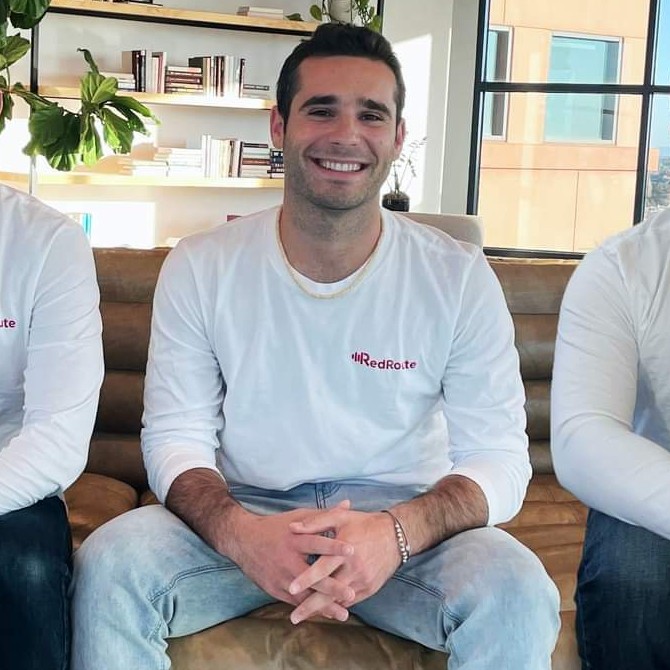
Brian Schiff
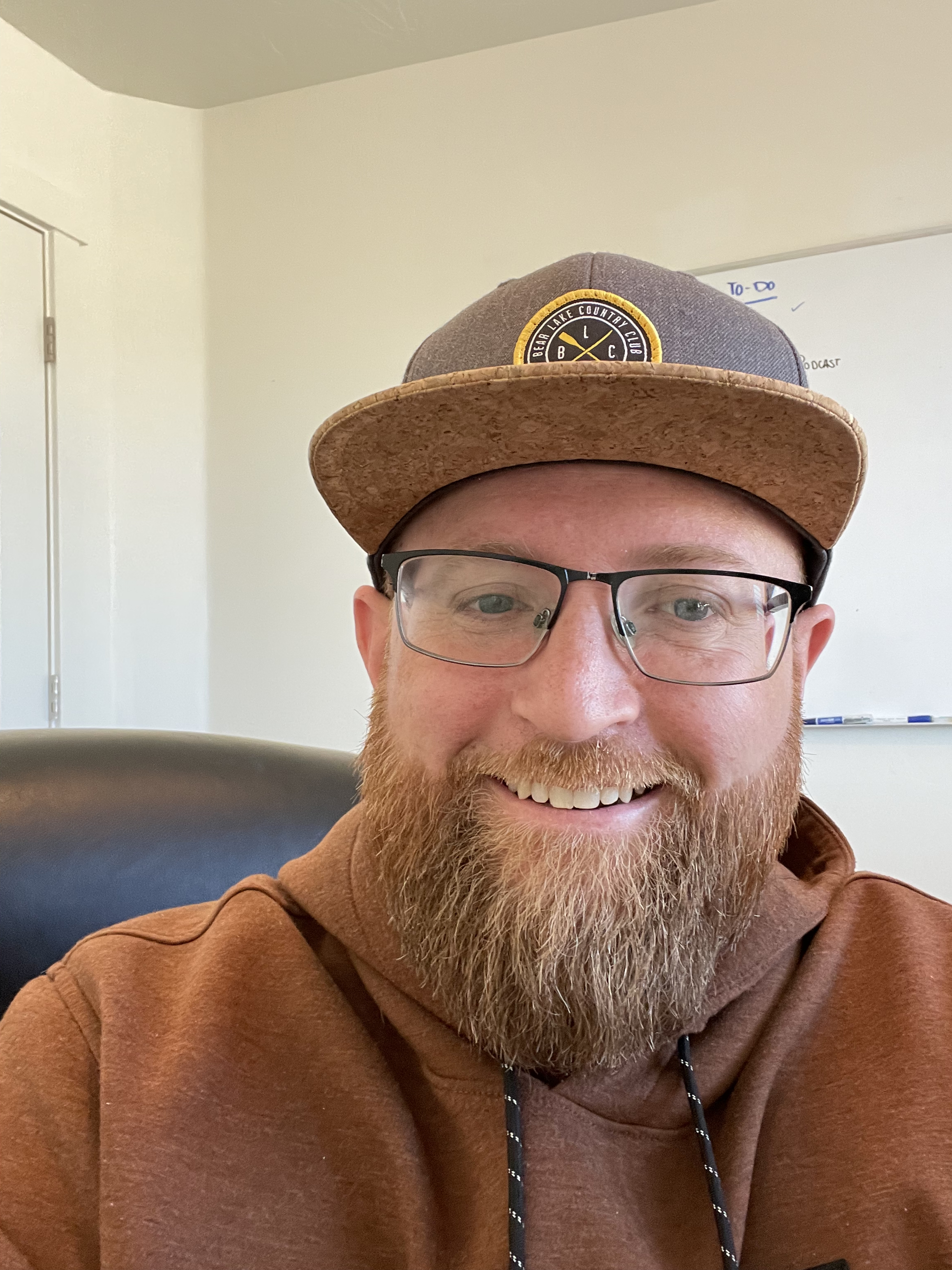
James Gilbert
Today's Guests

